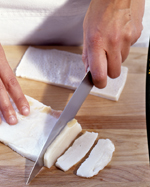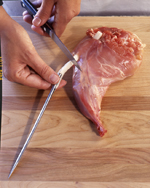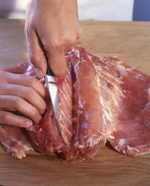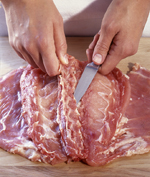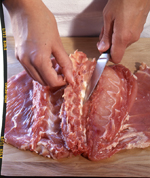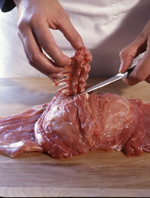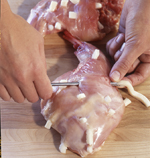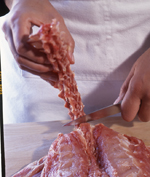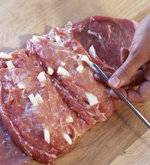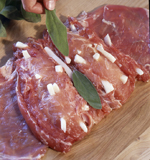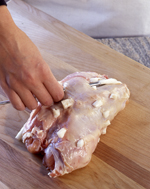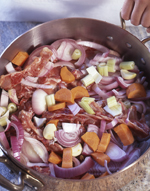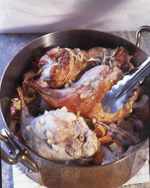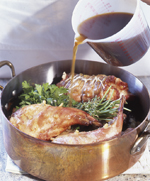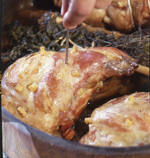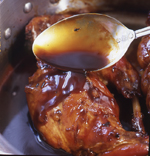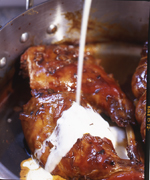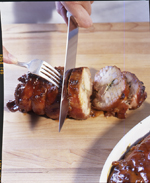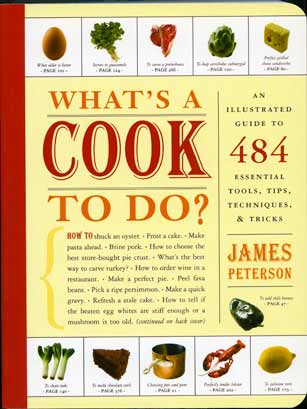Before we can eat rabbit we need to get over our bunny rabbit anxieties. I know they’re cute, but so are lots of other things such as baby chicks. They also happen to be pretty stupid, so don’t think eating a rabbit is like eating a cat.
Once these anxieties have been overcome, there’s the rabbit’s somewhat confusing anatomy. Typically, a rabbit’s forelegs are removed and cooked with the rest of the rabbit to provide savor to the cooking liquid, but are not served. The head, if there is one, is split in half. The rib cage is cut away from the meaty rear part, called the saddle. The two large thighs are removed.
Young rabbits can be cooked just like chicken, cut into pieces and fricasseed or sautéed, fried, grilled, or roasted. Because rabbit has no protective skin as does a chicken, it should be brushed with melted butter or oil when it’s being grilled or roasted.
Older rabbits are something else entirely and need to be long-braised. When done correctly, a long-braised rabbit is among the most delicious of things. When braising an old rabbit, it’s ideal to have the throat slit and the blood saved in a jar with a teaspoon of Cognac. (The Cognac prevents clotting.) The pieces should then be larded (see page 000), browned, simmered in broth until easily penetrated with a knife (2 to 3 hours), the braising liquid reduced and degreased and the rabbit glazed with the reduced braising liquid. The delicious braising liquid can be left as it is or finished with the blood (which turns the dish into an authentic civet) by whisking a little of the hot braising liquid into the blood, returning the mixture to the pan, and then heating gently, without boiling, to thicken the sauce. Cream, mushrooms, and truffles are a few other possibilities for this elegant dish.
People who cook or order rabbit for the first time may find it difficult to eat because of the way it’s put together. The thighs are similar to chicken thighs, but the saddle confounds people because the meat, in four different muscles, runs the length of the saddle on both sides. The two loin muscles and the filets (on the underside of the saddle) should be cut away with a knife by running lengthwise along the saddle.
To avoid the anatomy problem all together, you can bone the saddle and serve it in elegant rounds. To do this, slide a knife along the underside of the two filets that run the length of the saddle on the bottom. Don’t detach the filets completely, but continue scraping the knife along the bones that underlie the filets and then around the bones to the other side. You then cut under the loin muscles, separating them from the bones, but leaving them attached along the middle of the saddle. The trickiest part is cutting the two loin muscles away from the bone. To do this, leave a little of each bone imbedded in the flesh and remove the strip of bones just before serving.

